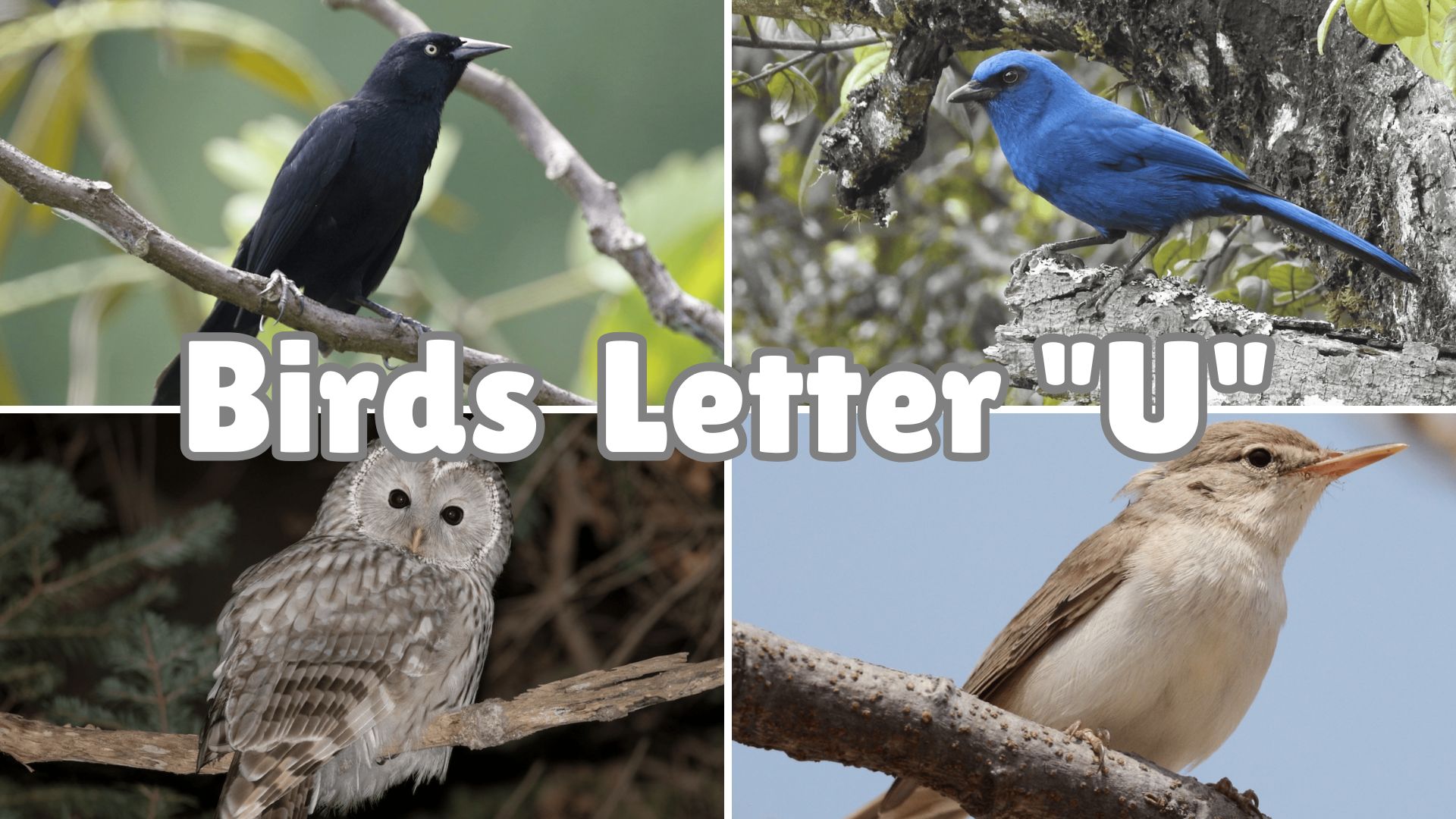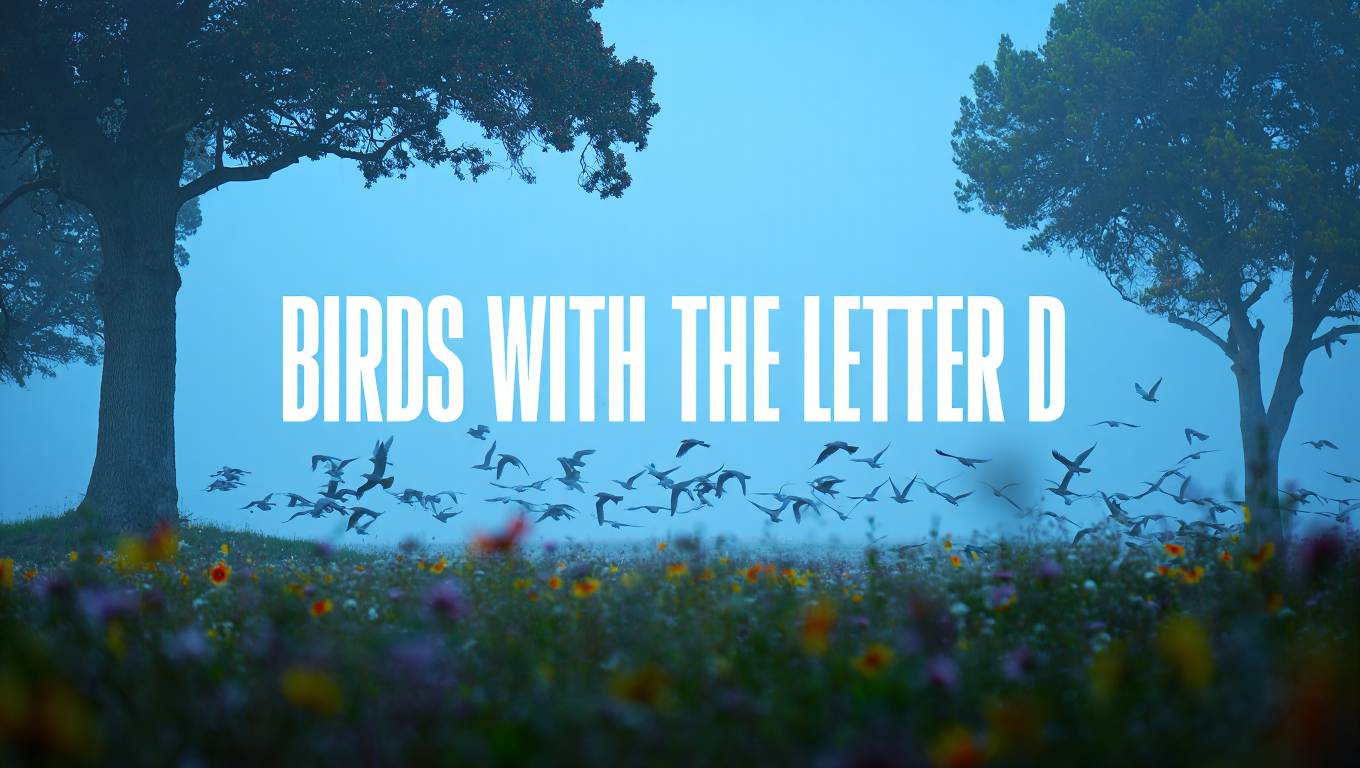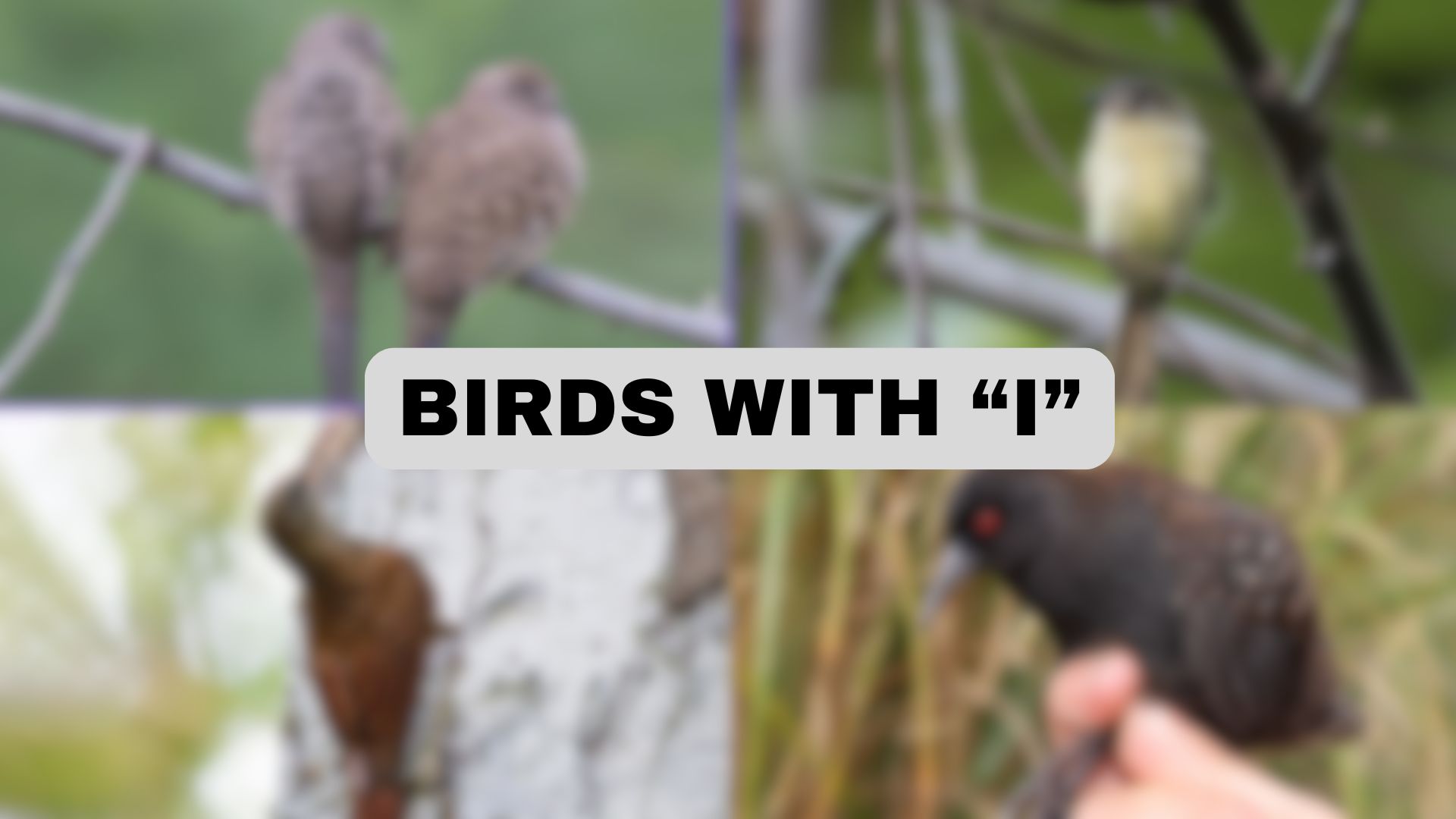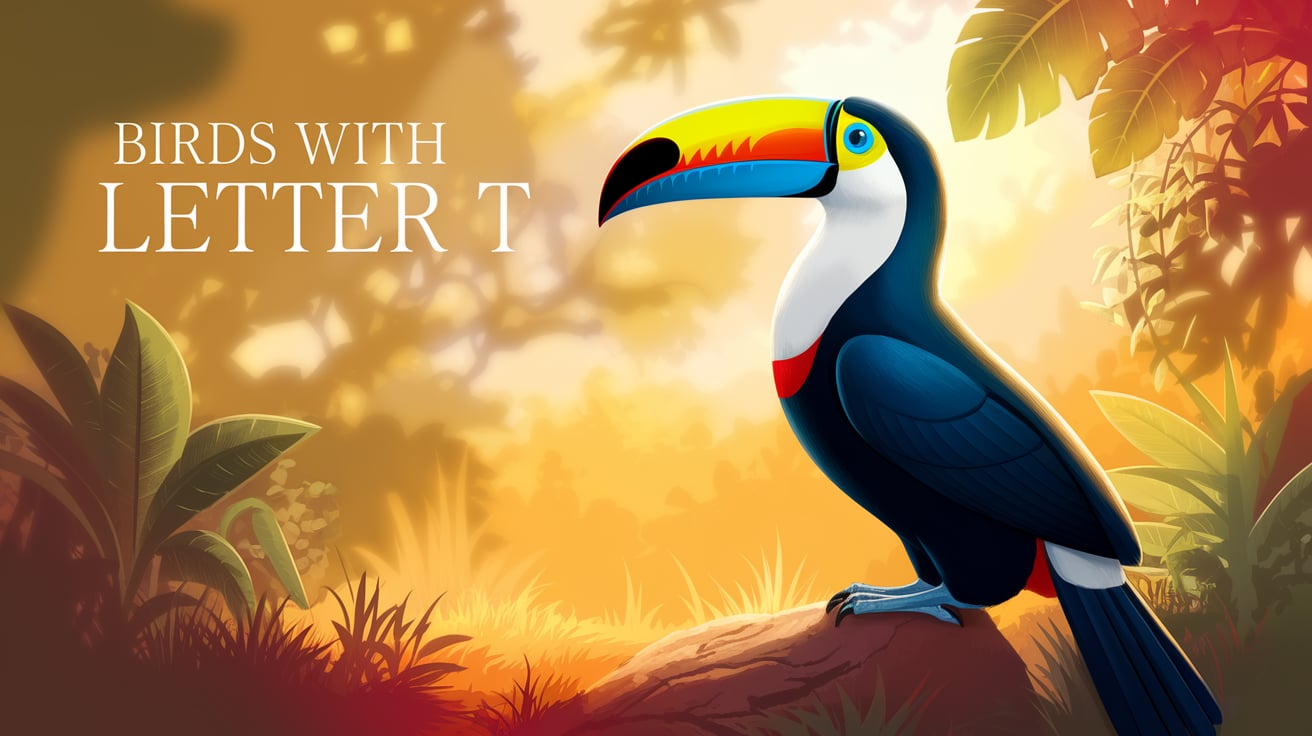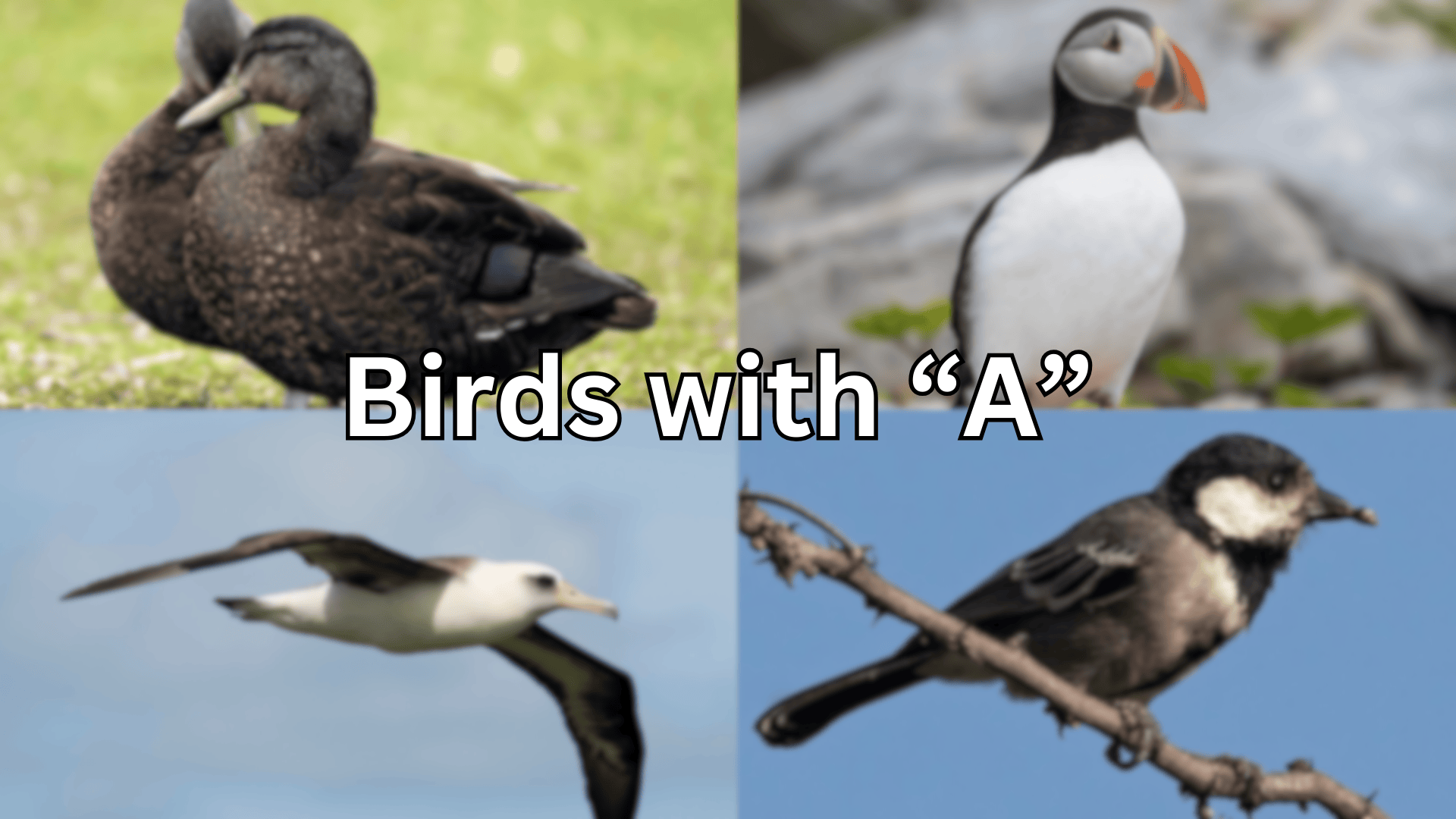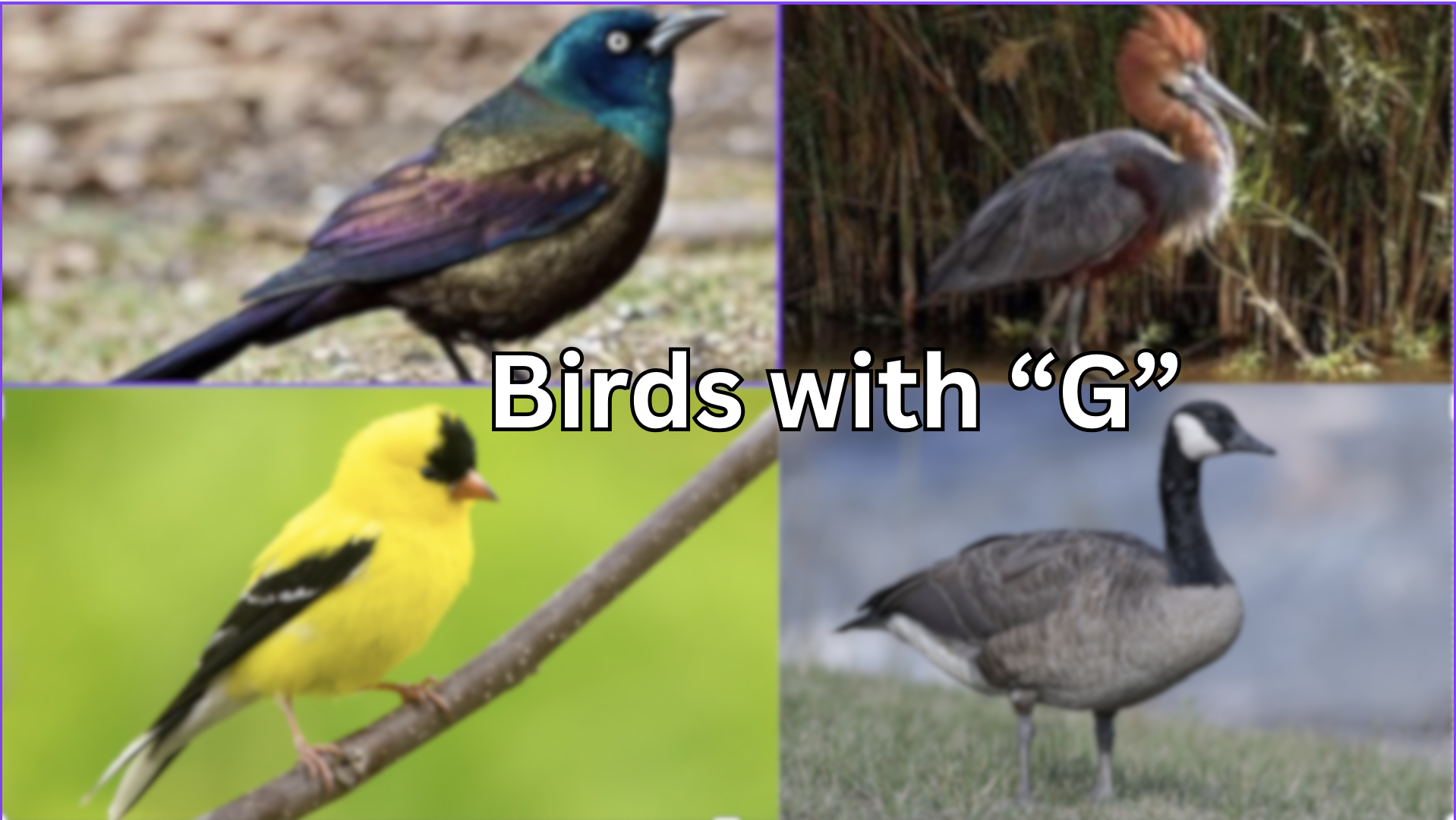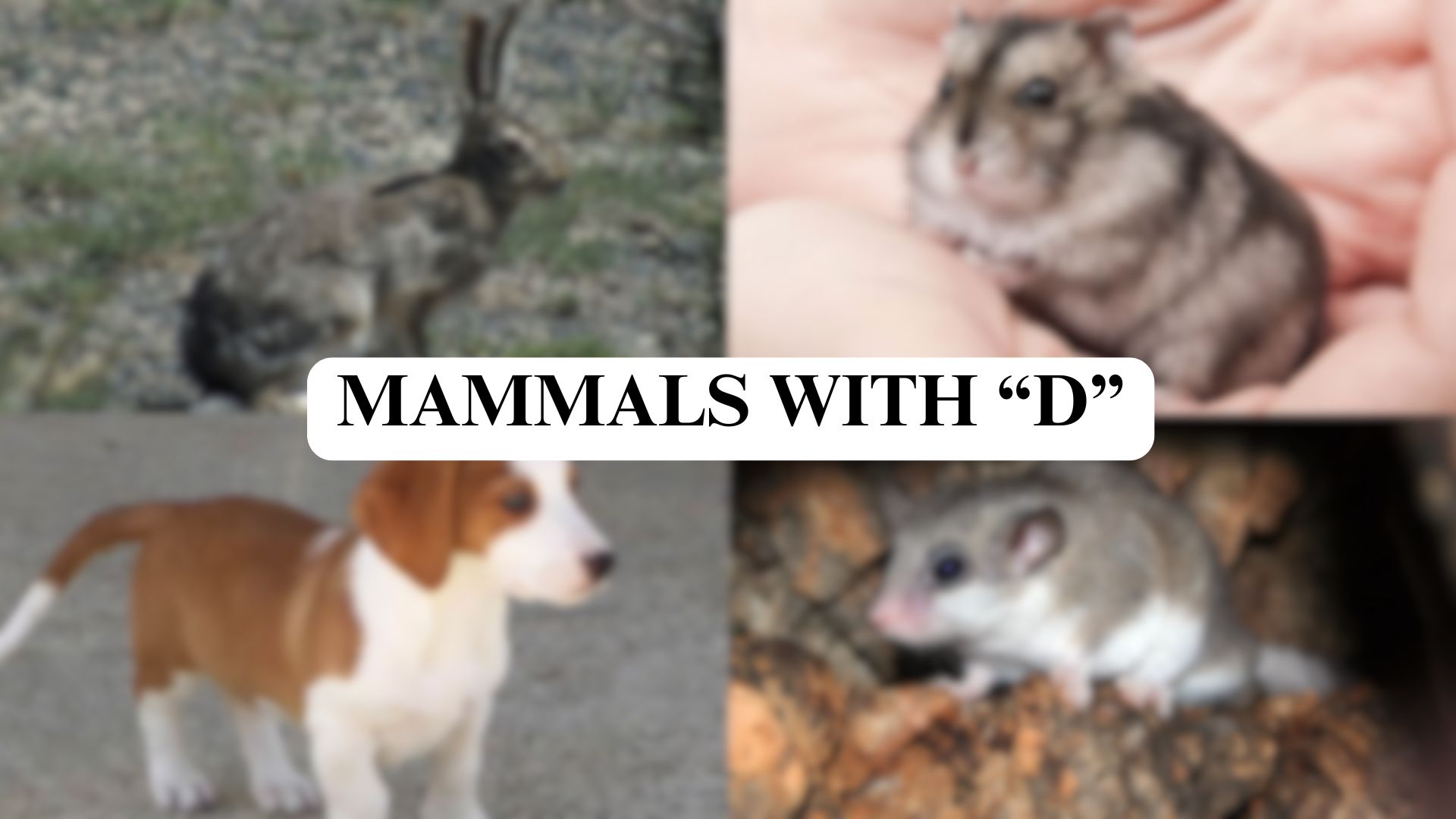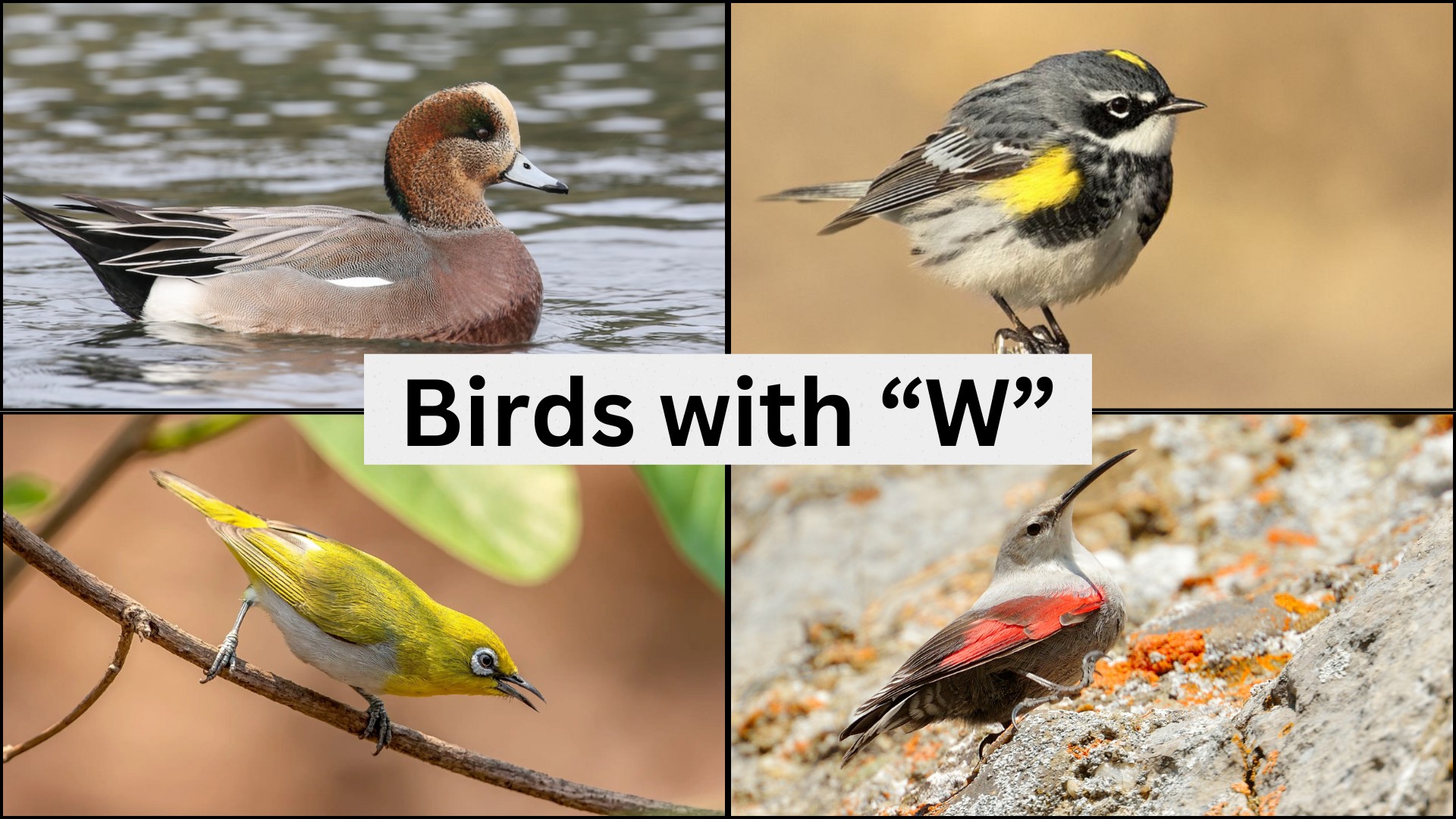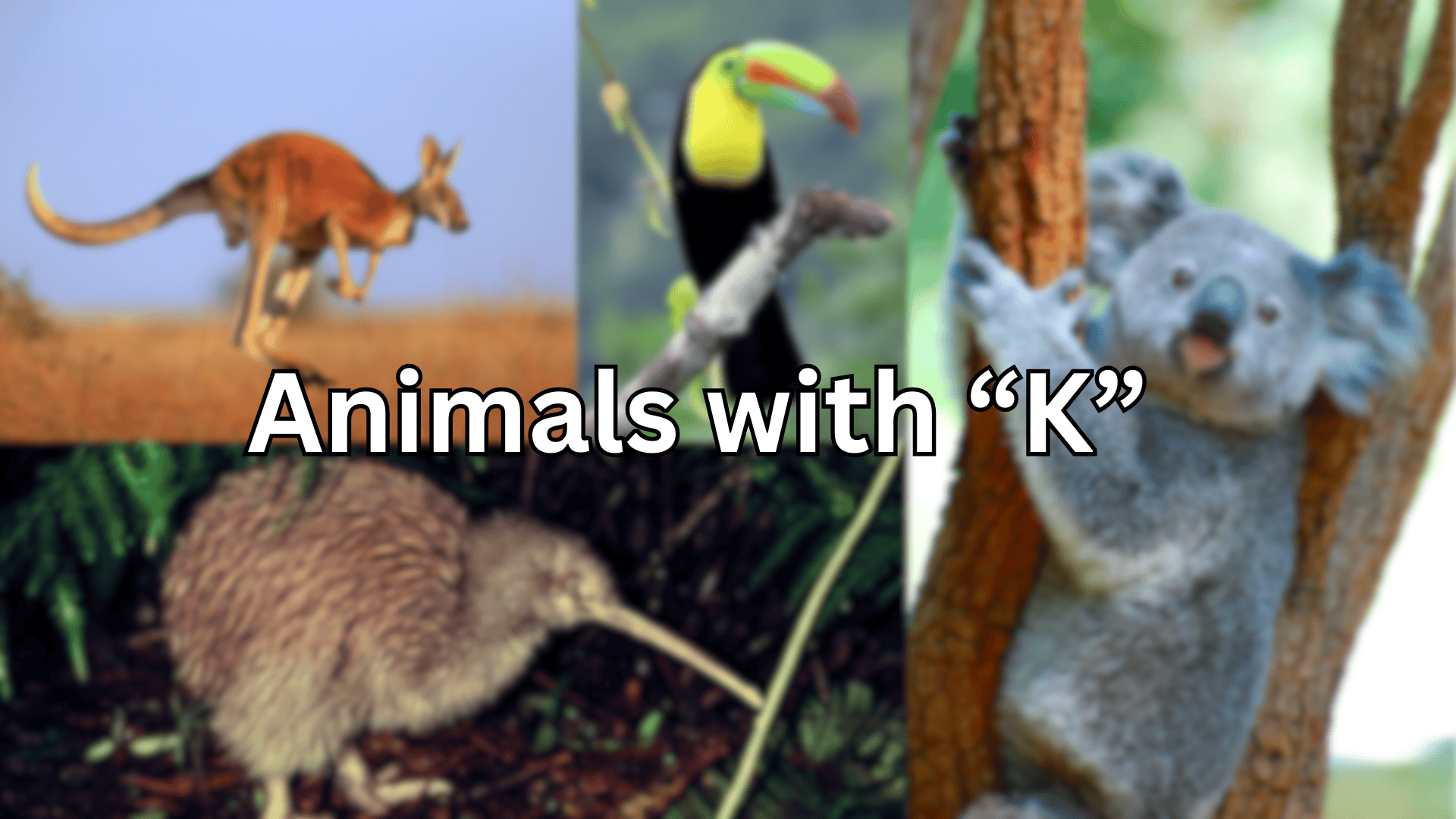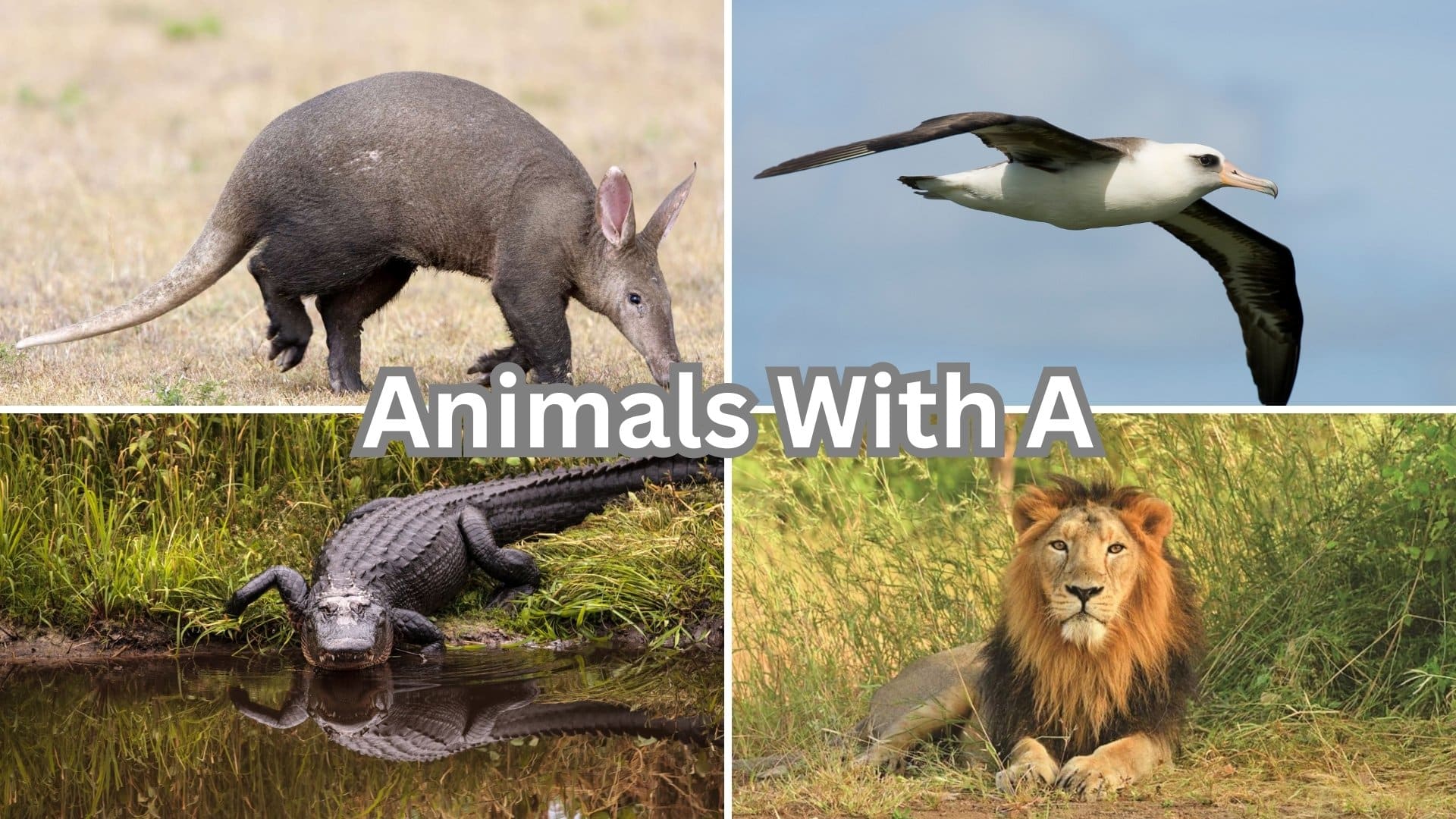
Take a walk through the world of “W” mammals—unique, wild, and worth knowing! From the majestic Walrus of arctic seas to the elusive Wolverine of northern forests, these remarkable creatures showcase nature’s incredible diversity.
Did you know that the Water Opossum is the only marsupial where both males and females have pouches?
In this extensive walkthrough, we’ll learn more about these wonderful “W” mammals, revealing their natural habitats, scientific classifications, unique dietary preferences, and distinctive vocalizations.
A wildlife enthusiast, a student researching animal biology, or simply curious about these interesting creatures, find out what makes each mammal beginning with “W” so exceptional.
Get ready to meet some of nature’s most wonderful yet often overlooked mammals that deserve their moment in the spotlight!
Common Mammals with the Letter “W”
1. White Bengal Tiger
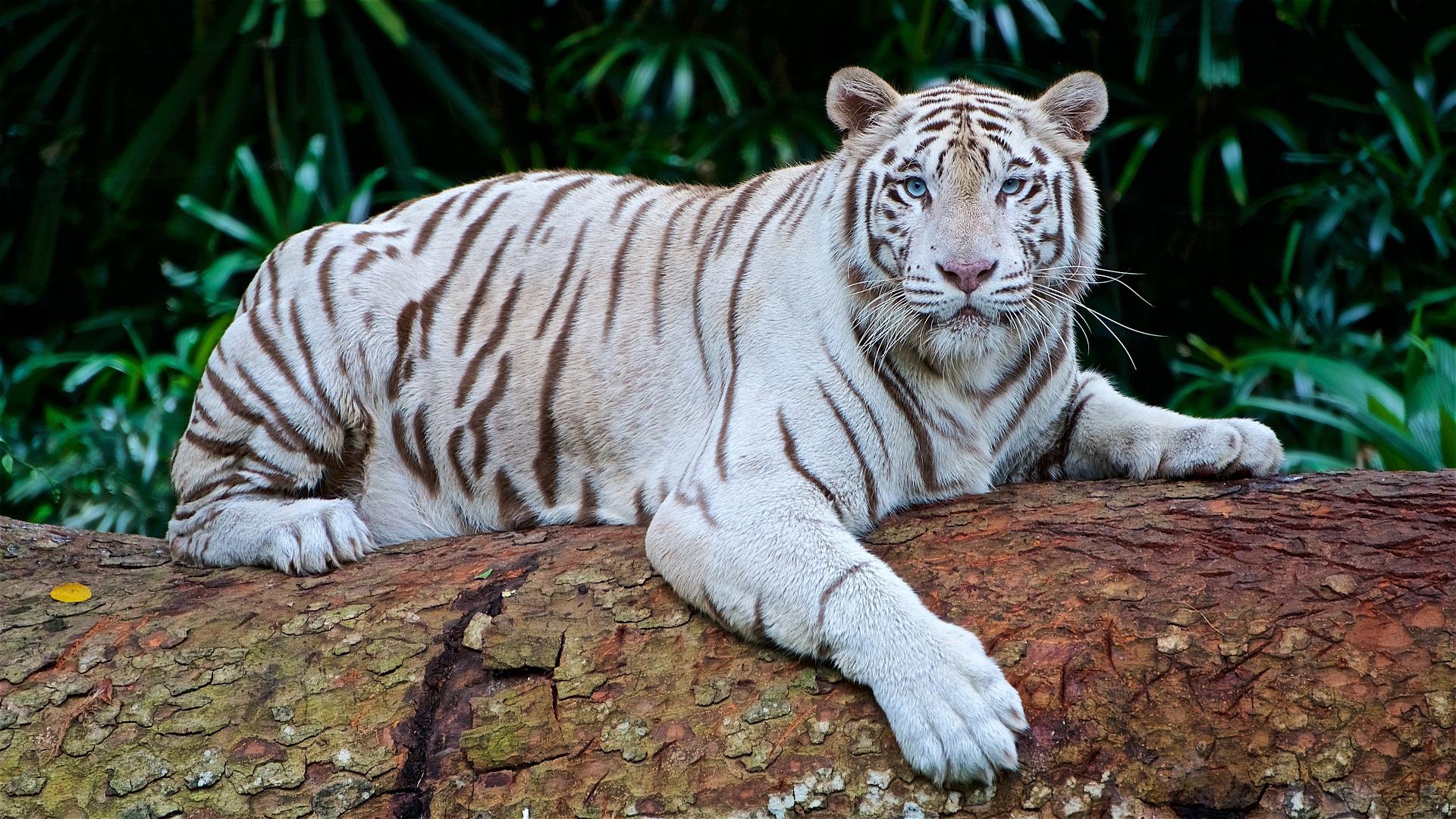
The White Bengal Tiger is a rare colour variant of the Bengal tiger, known for its striking white fur with black or dark brown stripes.
These majestic creatures can weigh up to 500 pounds and grow over 10 feet in length, including their tail. Their blue eyes, pink noses, and thick white coats distinguish them from their orange-coated counterparts.
- Region of Habitat: Native to the Indian subcontinent, particularly in dense jungle regions, mangroves, and grasslands. Most white Bengal tigers today are found in captivity.
- Scientific Name: Panthera tigris tigris
- Feeding Habits: Carnivorous hunters that primarily prey on deer, wild boar, and other ungulates, often stalking and ambushing their prey with great stealth and power.
- What Sound They Make: Roars, growls, chuffs, and hisses are used for communication—roars for dominance and territory, and chuffing for friendly interactions.
Fun Facts:
White Bengal Tigers are not albinos; their white coloring is due to a recessive gene. Despite their beauty, they face health challenges due to inbreeding in captivity.
Another surprising fact is that white tigers can swim exceptionally well and enjoy water, which is unusual among most big cats.
2. Whitetail Jackrabbit
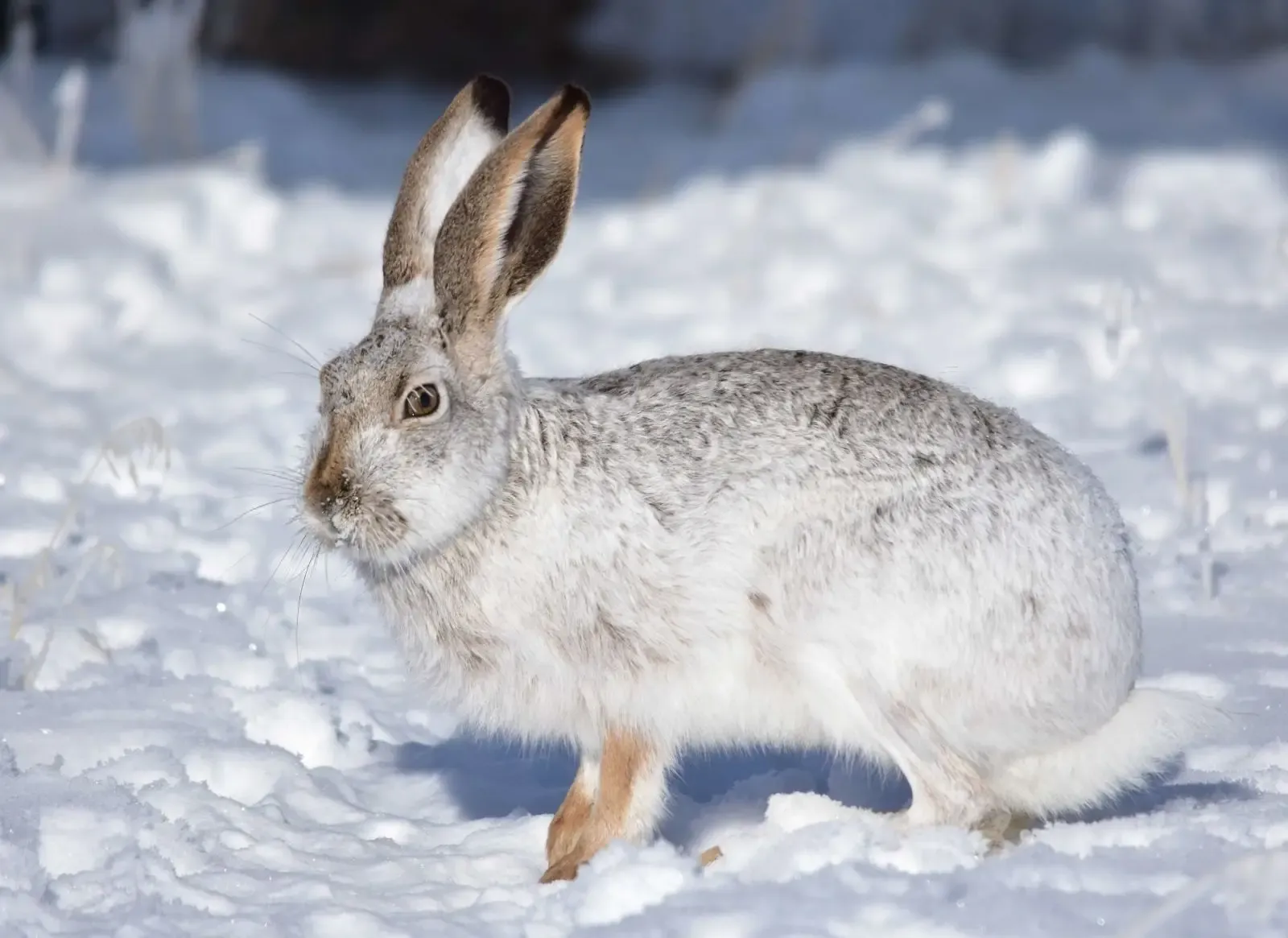
The Whitetail Jackrabbit is a large hare species with long ears edged in black, powerful hind legs, and a distinctive white underside to its tail that becomes prominent when it runs.
Its fur ranges from brownish-gray in the summer to almost white in the winter, offering effective camouflage in snowy environments.
- Region of Habitat: Found primarily in the Great Plains and western United States, as well as parts of southern Canada, especially in open grasslands, prairies, and deserts.
- Scientific Name: Lepus townsendii
- Feeding Habits: Herbivorous, feeding on grasses, shrubs, and other vegetation. It forages mainly at dusk and dawn to avoid predators.
- What Sound They Make: Generally silent, but may emit high-pitched squeals when threatened or captured to signal distress.
Fun Facts:
Despite being called a jackrabbit, it’s actually a hare, which means it’s born with fur and open eyes. Its powerful hind legs allow it to leap over 20 feet in a single bound, helping it evade predators like coyotes and eagles.
3. Walaroo
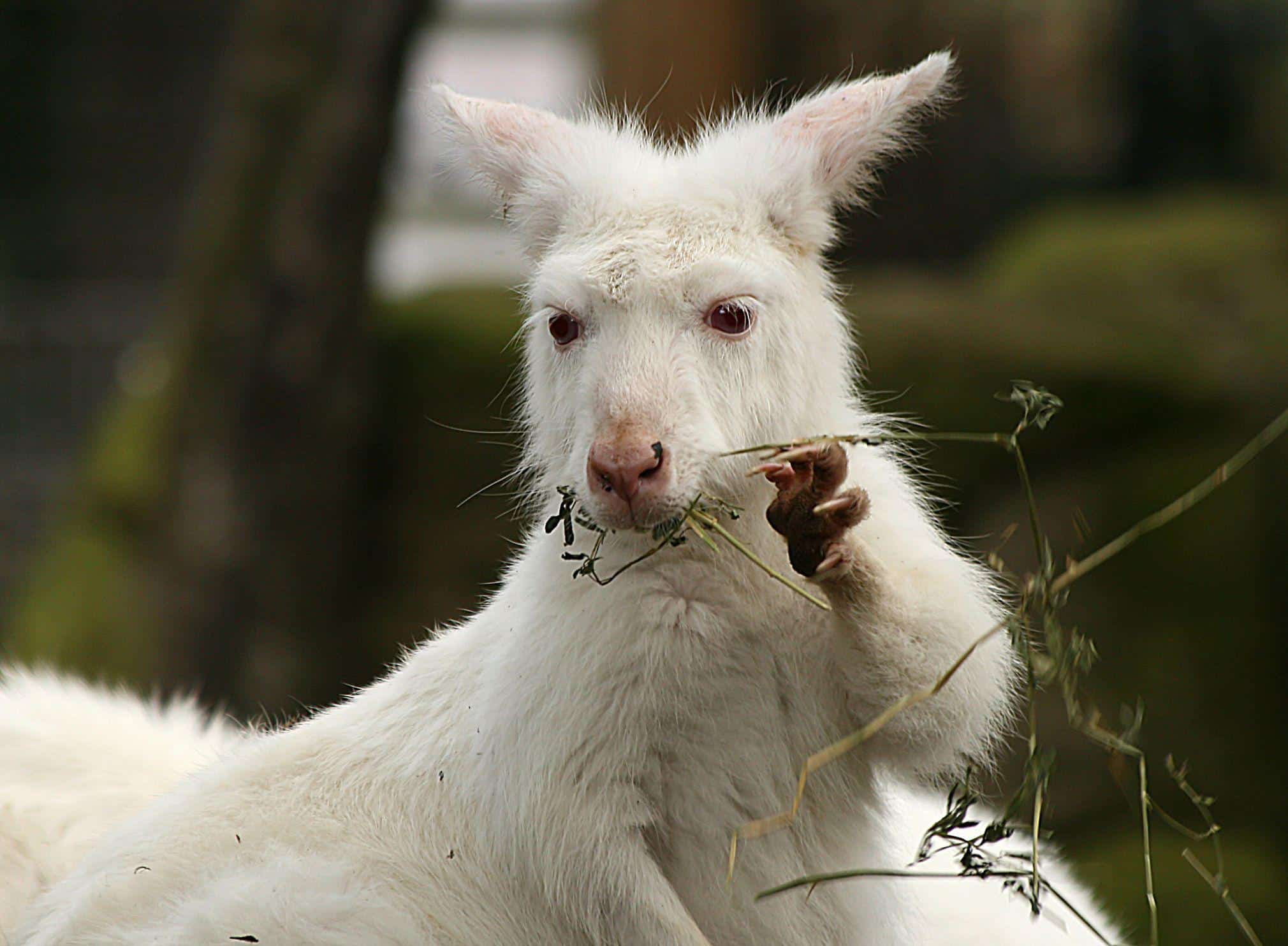
The walaroo is a medium-sized marsupial that sits between a wallaby and a kangaroo in size. It has a muscular build, coarse gray or brown fur, and a strong tail used for balance and support.
- Region of Habitat: Native to Australia, found in rocky outcrops, escarpments, and rugged terrains across the continent.
- Scientific Name:Osphranter robustus
- Feeding Habits: Herbivorous, feeding on grasses and shrubs, often foraging in the early morning or late afternoon.
- What Sound They Make: Produces low coughing grunts and foot thumping when alarmed.
Fun Facts:
Walaroos can survive in extremely arid conditions by conserving water and extracting moisture from plants. They are known to occupy the most inaccessible rocky ranges, avoiding predators and human activity.
4. Walrus
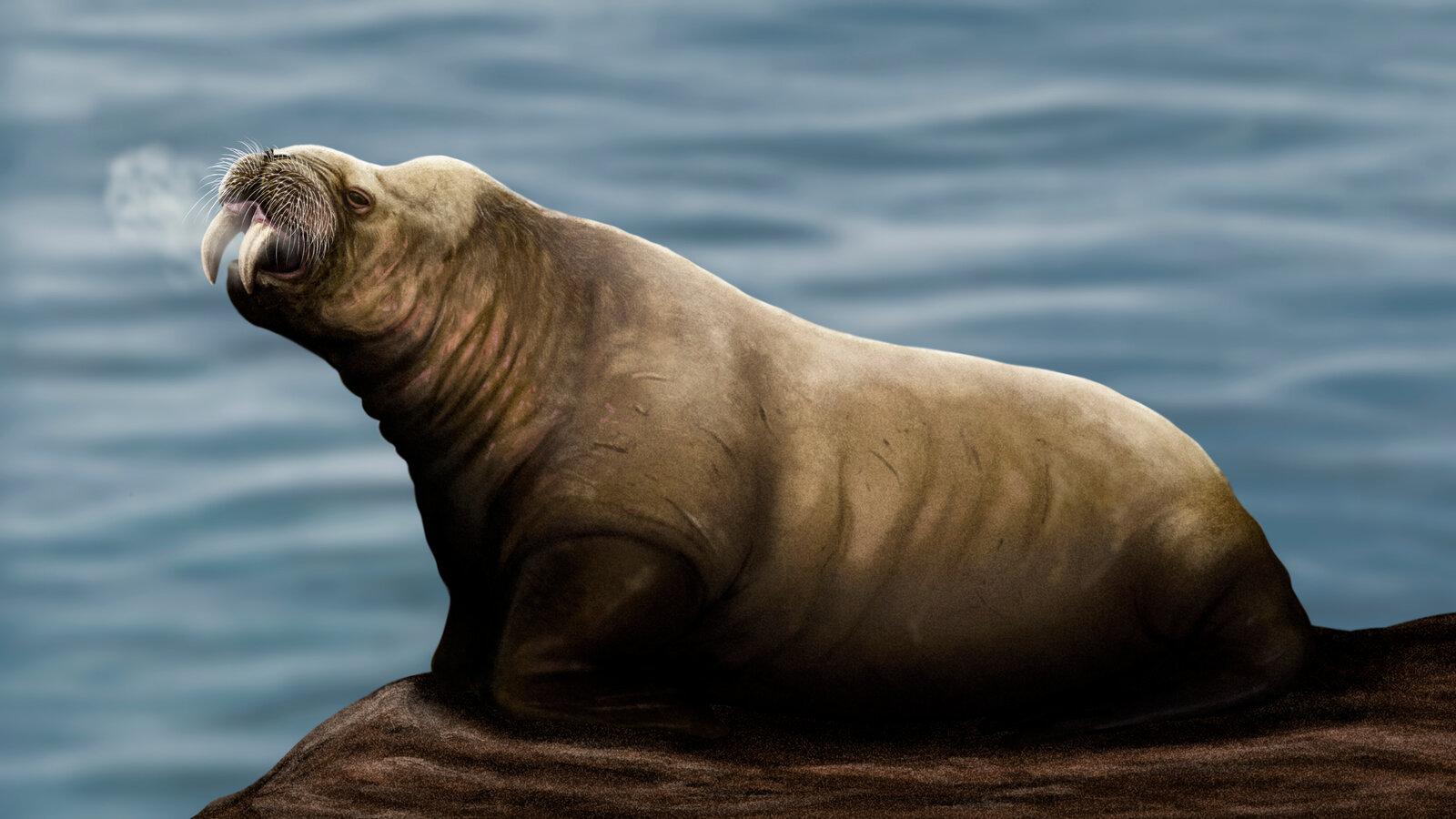
The walrus is a large marine mammal characterized by its prominent tusks, wrinkled brown skin, and long, bristly whiskers. Males can weigh over 4,000 pounds and are larger than females.
These social animals are often seen lounging in large groups on ice floes or rocky shorelines.
- Region of Habitat: Inhabits Arctic seas and coastal areas in the Northern Hemisphere, especially around ice floes.
- Scientific Name:Odobenus rosmarus
- Feeding Habits: Carnivorous bottom-feeder that uses its sensitive whiskers to locate clams, mollusks, and other small sea creatures.
- What Sound They Make: They produce grunts, bell-like calls, and clicks, especially during mating season.
Fun Facts:
Walrus tusks can grow up to 3 feet long and are used for defense, dominance, and helping haul themselves onto ice. Their thick blubber helps them stay warm in icy waters and stores energy during food scarcity.
5. Wambenger
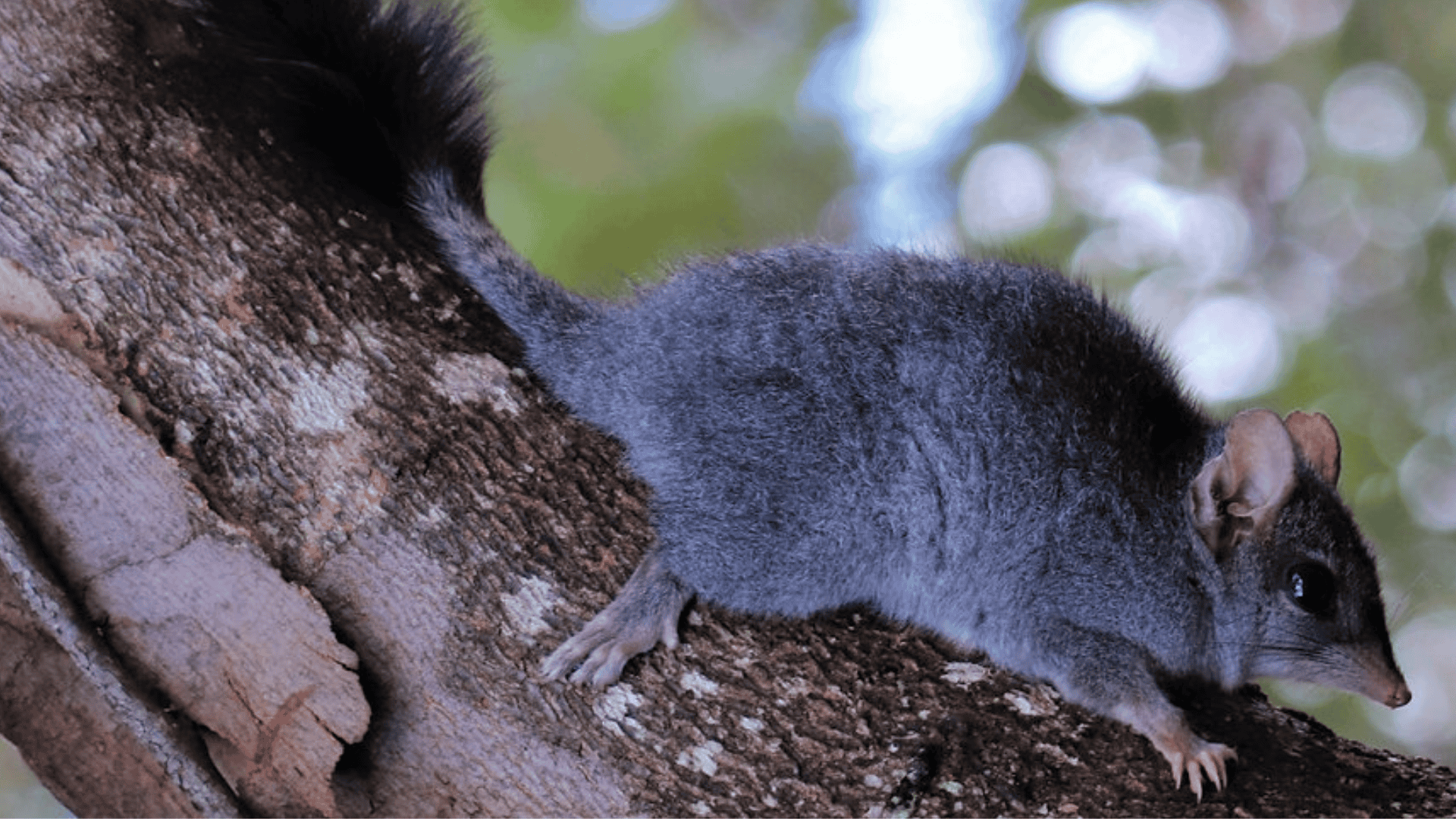
Also known as the brush-tailed phascogale, the wambenger is a small, nocturnal marsupial with a slender body, bushy tail, and pointed snout. It typically grows up to 9 inches long, not including the tail.
Its gray fur and agile movements help it glide through tree canopies with ease.
- Region of Habitat: Native to Australia, especially in dry sclerophyll forests and woodlands.
- Scientific Name:Phascogale tapoatafa
- Feeding Habits: Carnivorous, preying on insects, spiders, and small vertebrates by actively foraging in trees and on the ground.
- What Sound They Make: They emit squeaks and growls, particularly when disturbed or during breeding.
Fun Facts:
Male wambengers die after their first breeding season due to extreme physical stress. They are excellent climbers and use their bushy tails for balance while navigating tree canopies.
6. Wandering Shrew

The wandering shrew is a small, mouse-like mammal with a pointed nose, short fur, and a rapid metabolism. It measures just a few inches long and has a slender tail.
Despite its tiny size, it is constantly active and requires frequent feeding to sustain its high energy levels.
- Region of Habitat: Found in parts of Central and Southern Africa, usually in savannas, forests, and grasslands.
- Scientific Name:Crocidura fuscomurina
- Feeding Habits: Insectivorous, consuming beetles, larvae, ants, and other small invertebrates.
- What Sound They Make: They produce faint squeaks or chirps, often inaudible to humans.
Fun Facts:
Shrews must eat almost constantly to sustain their energy needs—some consume up to twice their body weight daily. Despite their tiny size, they are aggressive hunters within their niche.
7. Wapiti
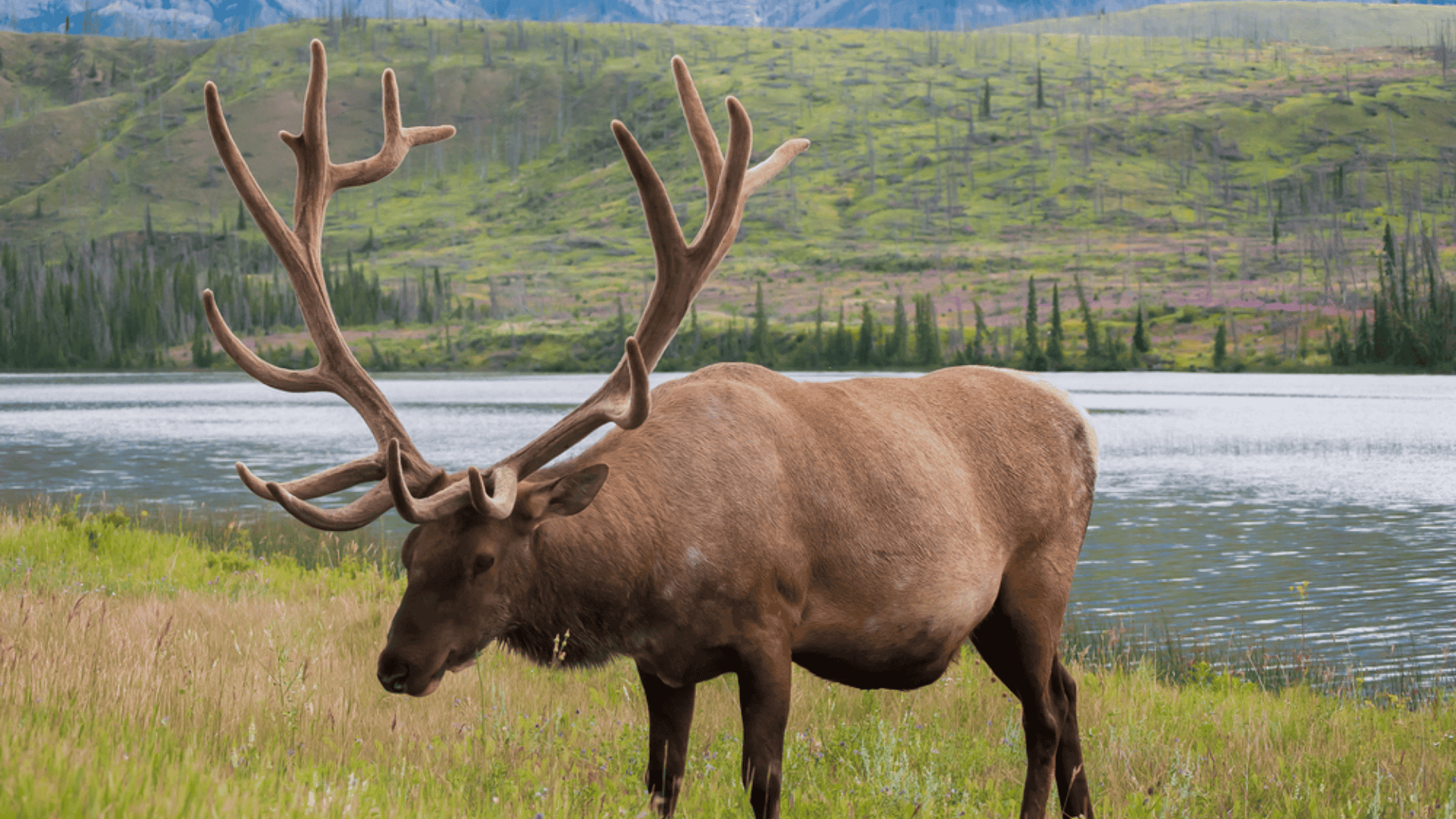
Also known as elk in North America, the wapiti is one of the largest deer species. Males sport large, branching antlers.
Their reddish-brown coats and stately build make them easy to distinguish.
- Region of Habitat: Native to North America and parts of Asia, typically found in forests, meadows, and mountainous areas.
- Scientific Name:Cervus canadensis
- Feeding Habits: Herbivorous, grazing on grasses, shrubs, and tree bark, especially during dawn and dusk.
- What Sound They Make: Known for their loud, high-pitched bugling calls used during mating season.
Fun Facts:
Male wapiti shed and regrow their antlers each year, which can reach over 4 feet in length. Their bugle can be heard from over a mile away and is used to assert dominance over rivals.
8. White Dolphin

The White Dolphin, often referring to the Chinese White Dolphin or Indo-Pacific humpback dolphin, is known for its pale pinkish-white coloration that becomes more pronounced with age. It has a strong body, long beak-like snout, and a curved dorsal fin.
Adults typically measure 7 to 9 feet in length, and Pacific white-sided dolphins can weigh up to about 440 pounds, while Atlantic white-sided dolphins generally weigh between 400 and 510 pounds.
- Region of Habitat: Found primarily in coastal waters of Southeast Asia, especially around the Pearl River Delta in China, as well as parts of the Indian Ocean and western Pacific.
- Scientific Name: Sousa chinensis
- Feeding Habits: Carnivorous, feeding mainly on fish, squid, and crustaceans. They use echolocation to locate prey and may hunt cooperatively.
- What Sound They Make: They emit clicks, whistles, and pulsed calls that are used for echolocation, communication, and coordination within pods.
Fun Facts:
The White Dolphin is also called the “pink dolphin” due to the blood vessels beneath its pale skin that become more visible during activity.
Another mesmerizing fact is that they are highly sensitive to changes in water pollution and habitat disruption, making them important indicators of ocean health.
9. Warthog
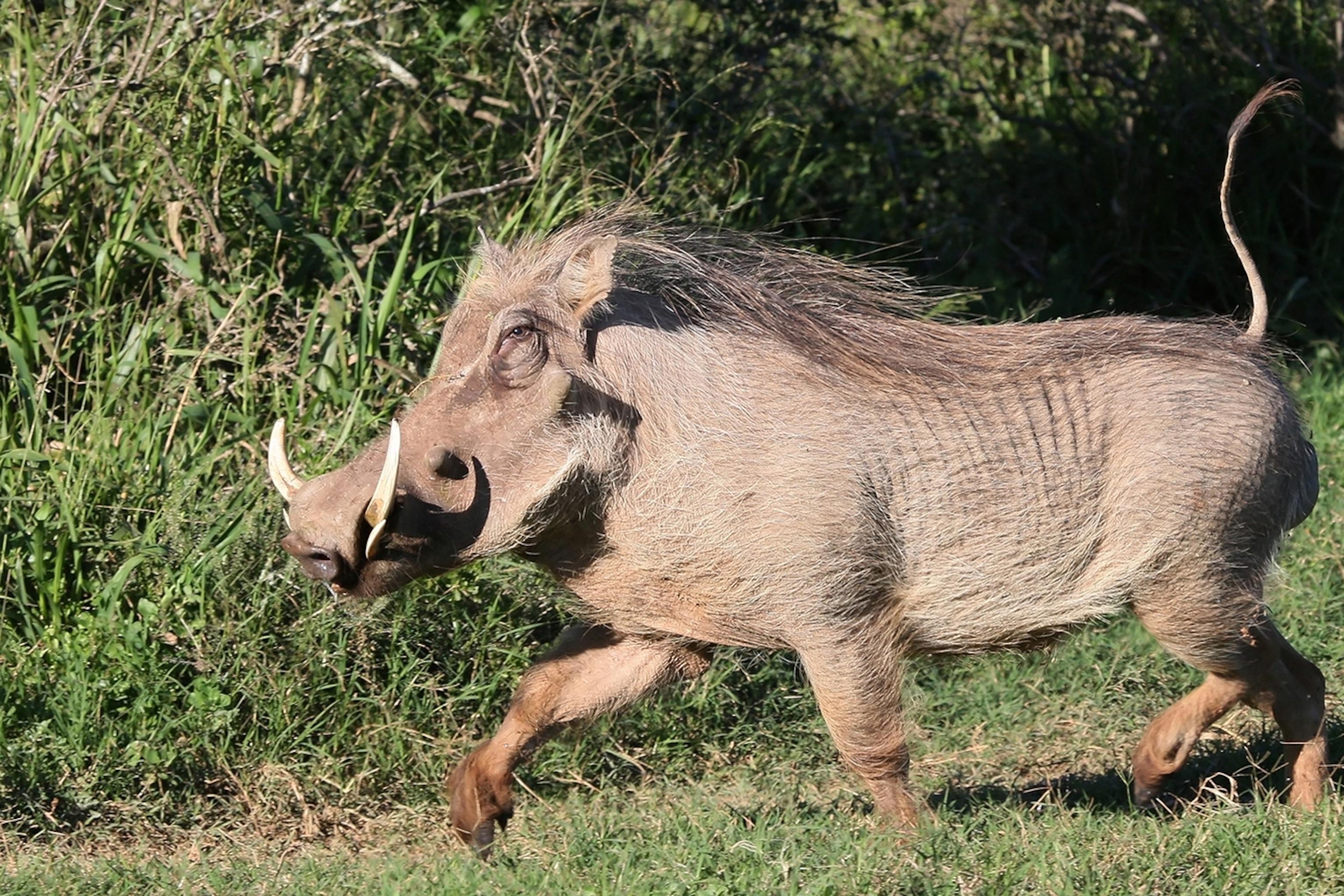
Warthogs are wild pigs with large, flat heads, tusks, and wart-like facial growths that protect them during fights. They have sparse hair, a mane along their backs, and can weigh over 150 pounds.
These hardy animals are fast runners and often enter their burrows backward to defend themselves with their tusks facing outward.
- Region of Habitat: Found throughout sub-Saharan Africa in grasslands, savannas, and open woodlands.
- Scientific Name:Phacochoerus africanus
- Feeding Habits: Omnivorous, feeding on grasses, roots, fruit, and sometimes small animals or carrion.
- What Sound Do They Make: They produce grunts, squeals, and growls during communication and defense.
Fun Facts:
Warthogs often kneel on their front legs while grazing. They are surprisingly fast runners and use abandoned aardvark burrows to escape predators.
10. Water Buffalo
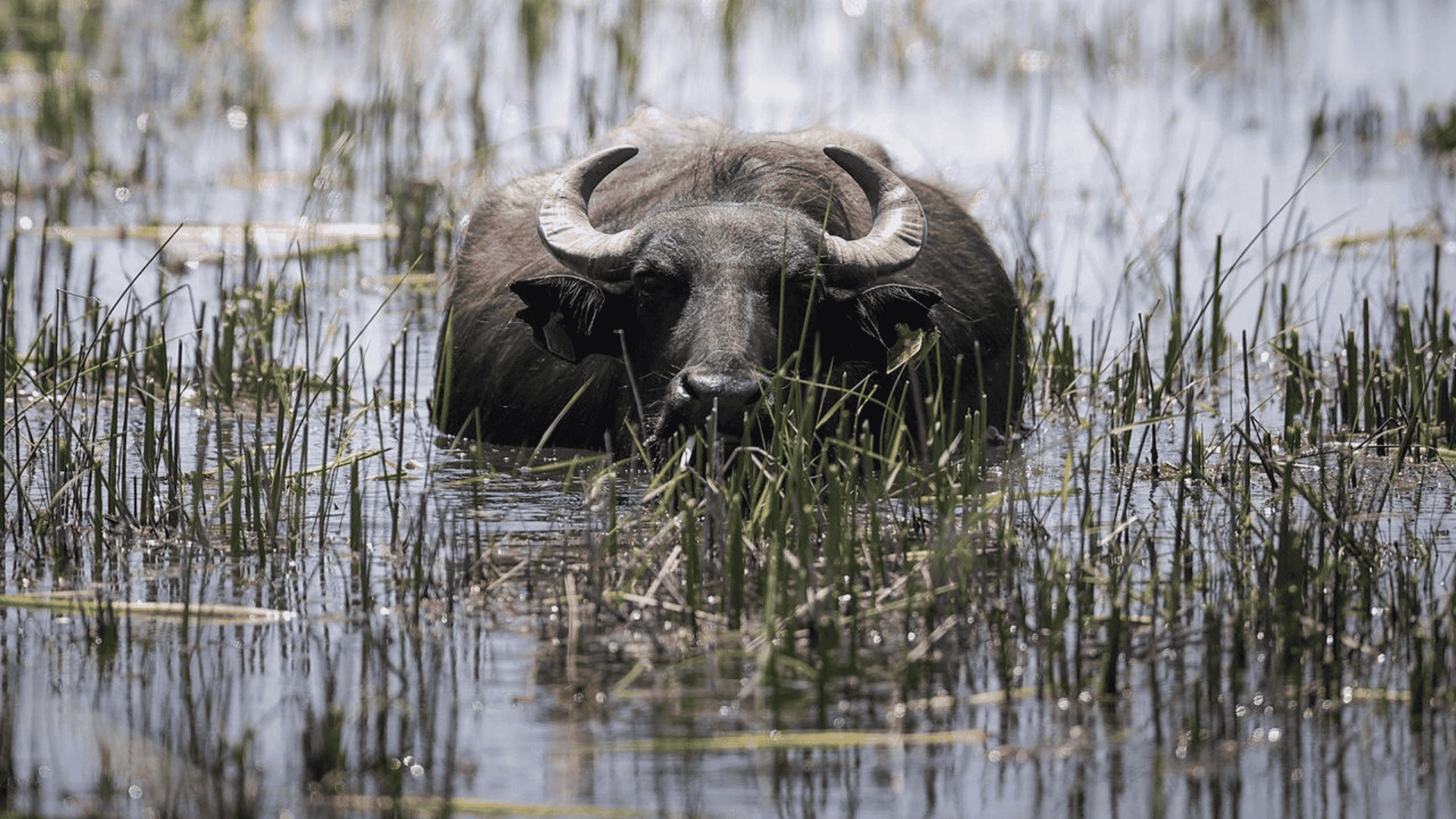
The water buffalo is a large, domesticated bovid with broad horns, large hooves, and dark gray to black skin. It can weigh over 2,500 pounds and is an essential working animal in many rural communities.
- Region of Habitat: Native to South and Southeast Asia, domesticated widely in wetlands and rice fields.
- Scientific Name:Bubalus bubalis
- Feeding Habits: Herbivorous, grazing on grass, aquatic plants, and grain fodder.
- What Sound They Make: Emit low-pitched grunts and bellows, especially when herded or alarmed.
Fun Facts:
Water buffalo milk is richer in fat than cow’s milk and is used to make mozzarella cheese. Their wallowing behavior helps regulate body temperature and protects against insects.
11. Water Deer
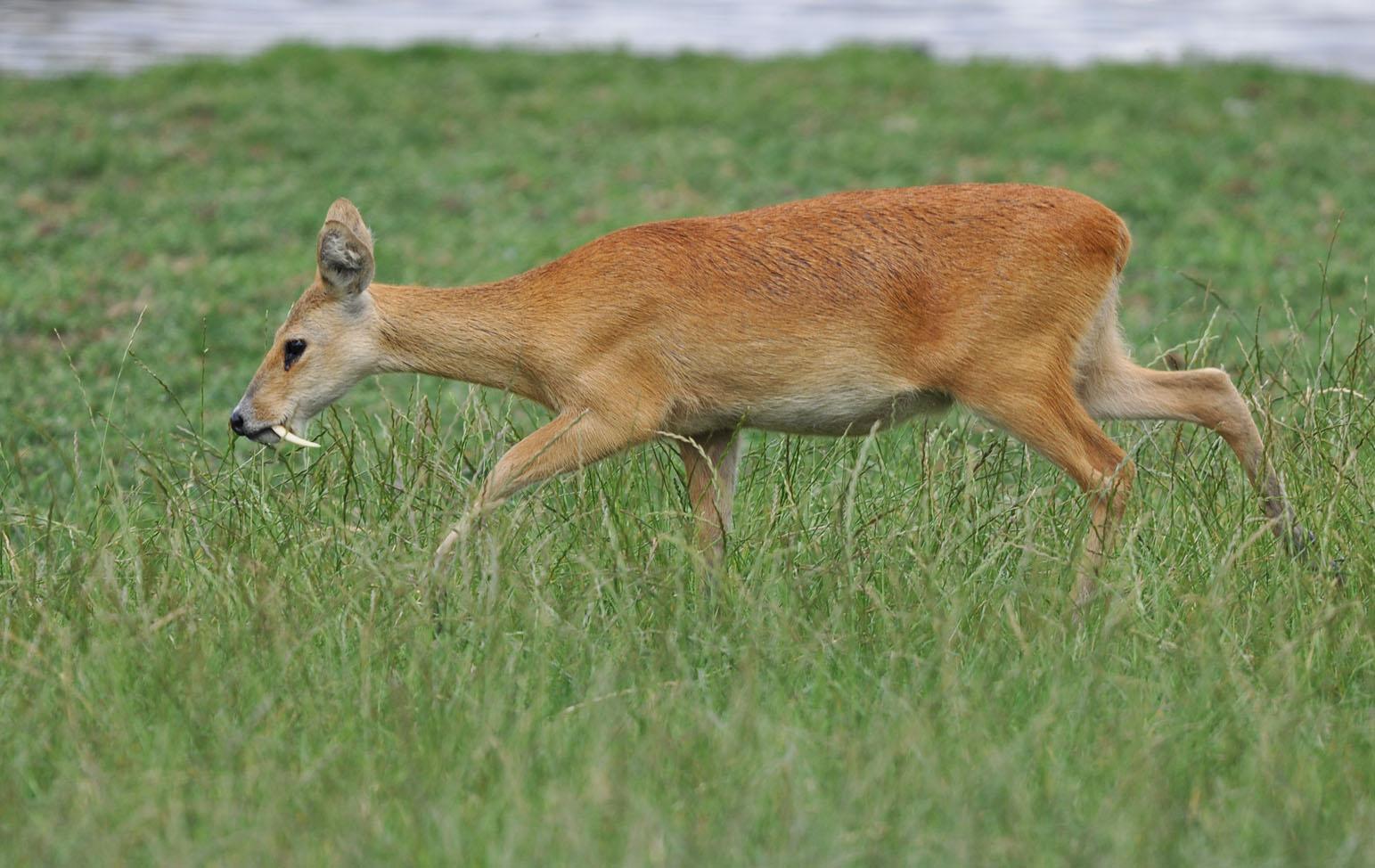
The water deer is a small, deer-like mammal with no antlers but long, protruding canine teeth, giving it a “vampire” appearance. It has a stocky build and coarse brown fur.
Known for its agility, it can leap great distances and prefers wetlands, swamps, and riverside habitats.
- Region of Habitat: Native to China and Korea; also found in the UK, preferring wetlands and grasslands.
- Scientific Name:Hydropotes inermis
- Feeding Habits: Herbivorous, feeding on grasses, reeds, and aquatic plants.
- What Sound They Make: Makes barking sounds and high-pitched whistles when alarmed.
Fun Facts:
Water deer are excellent swimmers and often escape danger by diving into rivers. Their fang-like tusks are used in territorial disputes between males.
12. Water Vole
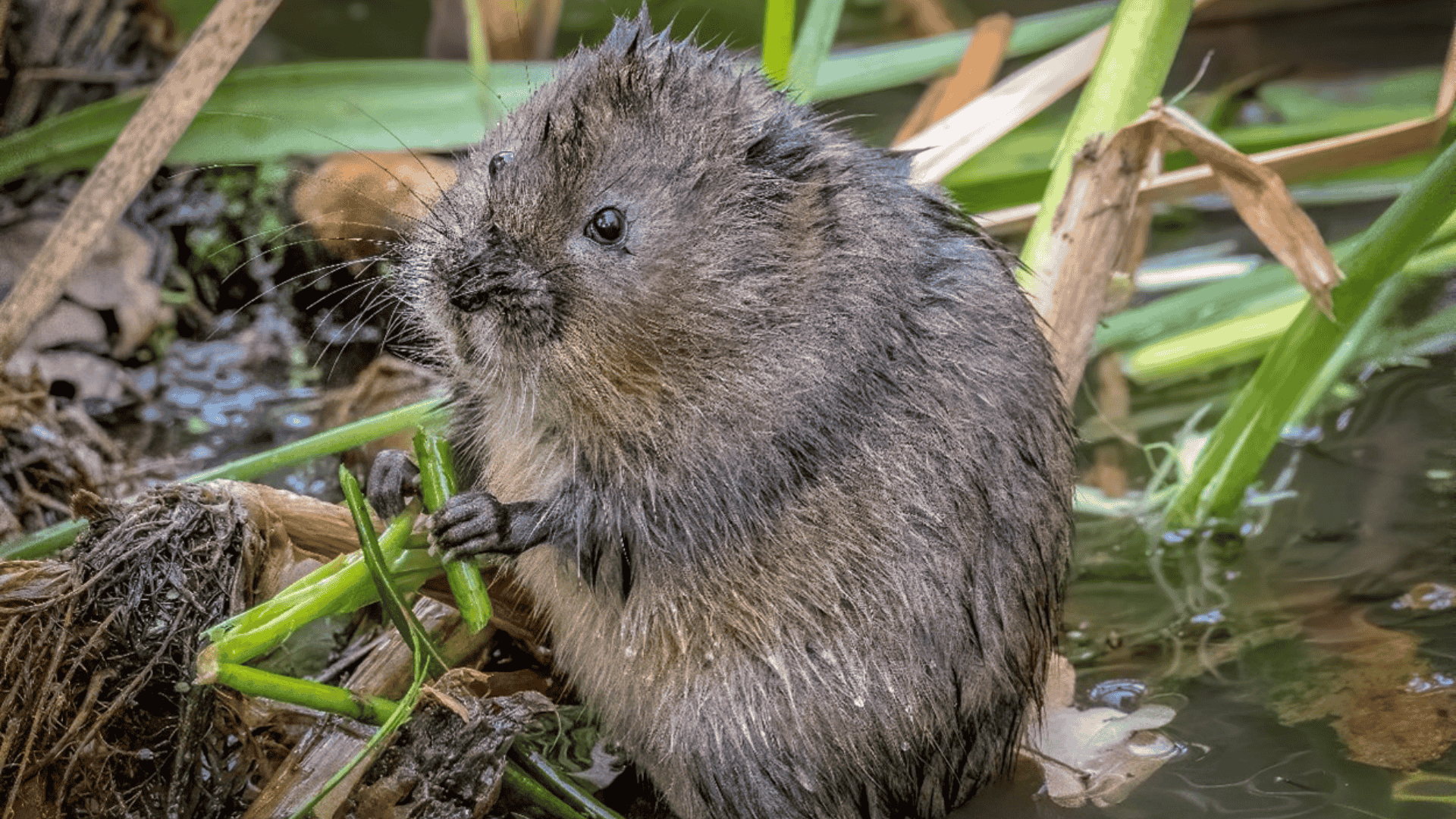
The water vole is a small rodent with a plump body, short ears, and a furry tail. It is often mistaken for a rat, but it is generally larger and has a rounder face.
Known for its agility, it can leap great distances and prefers wetlands, swamps, and riverside habitats.
- Region of Habitat: Found in Europe and Asia, living along riverbanks, canals, and wetlands.
- Scientific Name:Arvicola amphibius
- Feeding Habits: Herbivorous, eating grasses, reeds, bark, and fruits.
- What Sound They Make: They Emit soft squeaks and rustling sounds when moving through vegetation.
Fun Facts:
Water voles are known for their burrowing habits and create extensive tunnel systems near water. They are a key species in their ecosystems, influencing plant and insect populations.
13. Waterbuck
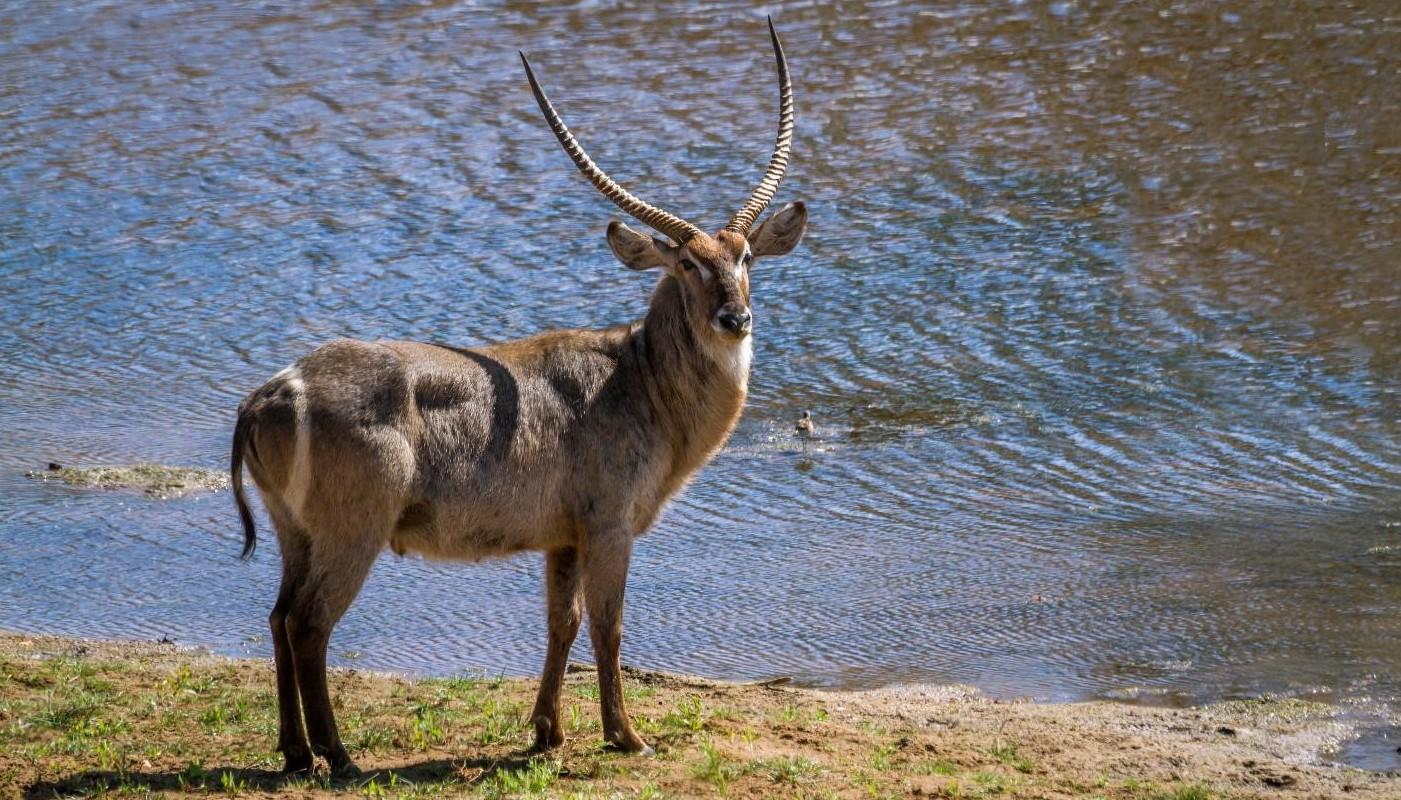
The waterbuck is a large, shaggy antelope with a white ring on its rump and long, spiraled horns (in males). It has a strong, musky odor and a sturdy, robust build.
This antelope is often found near water sources, using aquatic habitats as a refuge from predators.
- Region of Habitat: Common in sub-Saharan Africa near rivers, lakes, and wetlands.
- Scientific Name:Kobus ellipsiprymnus
- Feeding Habits: Grazes on grasses and reeds, especially near water sources.
- What Sound They Make: Emit snorts and grunts, especially when alarmed or during mating displays.
Fun Facts:
Waterbucks emit an oily secretion that acts as a water-repellent, helping them escape predators by diving into water. Their distinctive scent makes them less palatable to lions.
14. Weasel
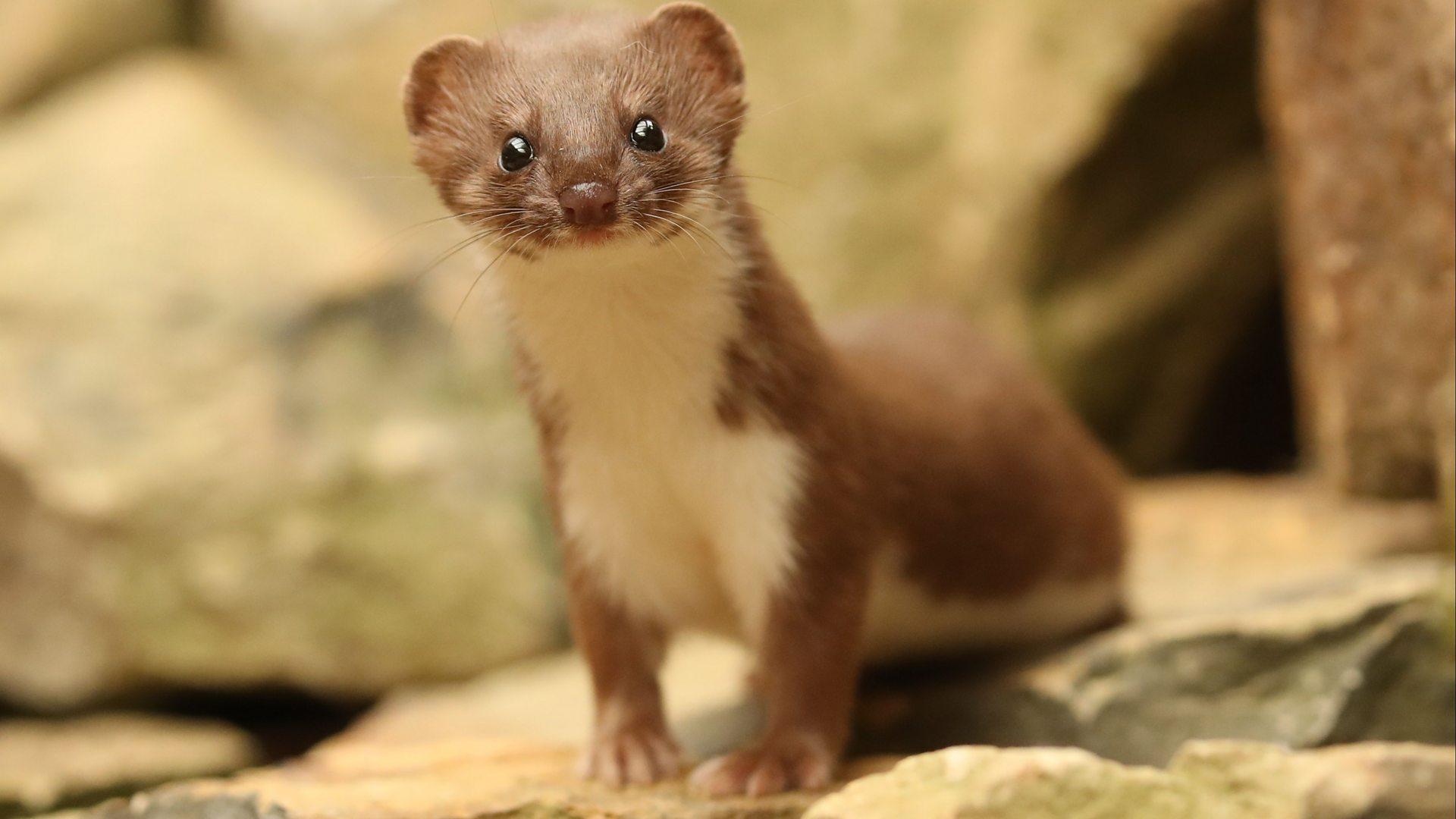
Weasels are small carnivorous mammals with long, slender bodies, short legs, and sharp teeth. Depending on the species and season, their fur ranges from brown to white.
Agile and quick, they are skilled hunters that can pursue prey into burrows and tight spaces.
- Region of Habitat: Found across North America, Europe, and Asia in woodlands, grasslands, and farmlands.
- Scientific Name:Mustela spp.
- Feeding Habits: Carnivorous, preying on rodents, birds, and insects with swift, agile attacks.
- What Sound They Make: Produce high-pitched chirps, hisses, and chatters, especially when excited or threatened.
Fun Facts:
Due to their speed and ferocity, weasels can kill prey much larger than themselves. They play a vital role in controlling rodent populations.
15. Weimaraner
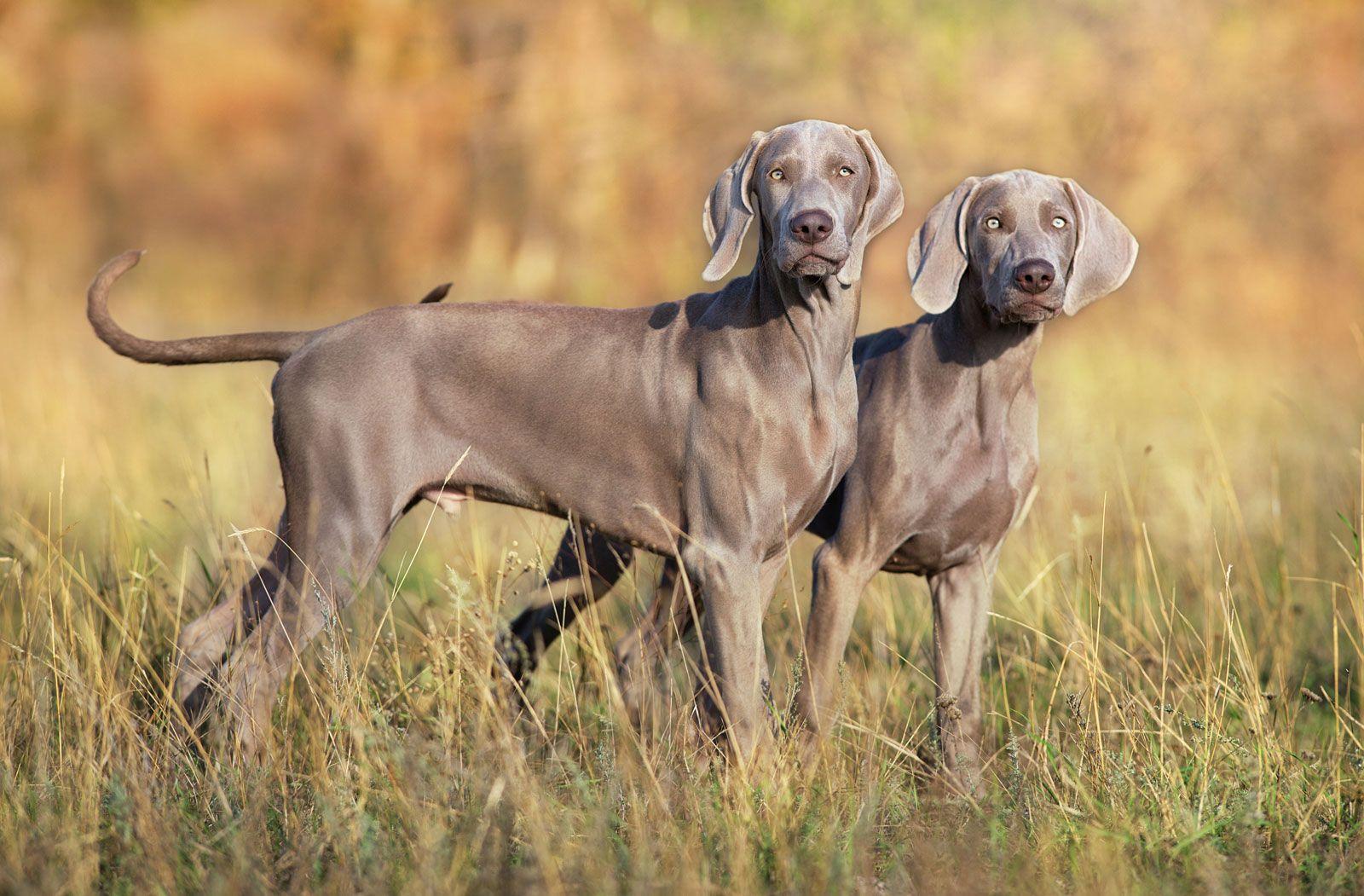
The Weimaraner is a sleek, athletic dog breed with a silver-gray coat and amber or blue-gray eyes. Known for its speed and endurance, it’s a favorite among hunters and active families.
Highly intelligent and energetic, it thrives on companionship and regular physical activity.
- Region of Habitat: Domesticated breed originally from Germany, now found globally as pets or working dogs.
- Scientific Name:Canis lupus familiaris (breed: Weimaraner)
- Feeding Habits: Omnivorous, typically fed a diet of commercial dog food with meat, grains, and vegetables.
- What Sound They Make: Barking, whining, and howling are common forms of communication.
Fun Facts:
Originally bred for hunting large game like boar and deer, Weimaraners are incredibly intelligent and trainable. They’re often called “gray ghosts” for their distinctive coat and stealthy movement.
More Mammals With the Letter “W”
16. Welsh Corgi
17. West Highland White Terrier
18. Western Barred Bandicoot
19. Western Chimpanzee
20. Western Gorilla
21. Western Grey Kangaroo
22. Western Hoolock Gibbon
23. Western Lowland Gorilla
24. Western Pipistrelle
25. Western Quoll
26. Western Red Colobus
27. Western Spotted Skunk
28. Western Tarsier
29. Westie
30. Whippet
31. White Bat
32. White Beaked Dolphin
33. Wahoo Bat
34. White Capped Capuchin
35. White Cheeked Gibbon
36. Warrah
37. White Faced Capuchin
38. White Ferret
39. White Lion
40. White Rhino
41. White Sided Dolphin
42. White Tailed Deer
43. White Tailed Mongoose
44. White Tiger
45. White Whale
46. White Yak
47. Wallaby
48. Whitetip Bat
49. Wildebeest
50. Whooping Monkey
51.Wombat
52. Wildcat
53. Whoodle
54. Wild Ass
55. Wild Boar
56. Wild Cat
57. Wild Dog
58. Wild Donkey
59. Wild Goat
60. Wild Horse
61. Wild Pig
62. Wild Sheep
63. Wild Yak
64. White-nosed Coati
65. Willow Bat
66. Willow Dormouse
67. Wilson’s Bat
68. Wilson’s Mole
69. Wind Bat
70. Western Koala
71. White-lipped Tree Frog
72. White Tail Deer
73. Wind Vole
74. Windle Fox
75. Winged Bat
76. Wire Fox Terrier
77. Wirehaired Dachshund
78. Wirehaired Pointing Griffon
79. White Rhinoceros
80. White Nose Monkey
81. Wolf
82. Wolf Dog
83. Wolfhound
84. Wolverine
85. Wilson’s Spiny Rat
86. Wood Bison
87. Wood Mouse
88. Wood Rat
89. Woodchuck
90. Woodland Dormouse
91. Woodland Jumping Mouse
92. Woodland Vole
93. Woodrat
94. Wool Dog
95. Woolly Bat
96. Woolly Lemur
97. Woolly Mammoth
98. Woolly Monkey
99. Woolly Opossum
100. Woolly Rat
101. Woolly Rhino
102. Woolly Shrew
103. Woolly Squirrel
104. Woolly Tapir
105. Woolly Wolf
106. Working Cocker Spaniel
107. Working Dog
108. Wrinkled Bat
109. Wrinkle-faced Bat
110. Whitetail Antelope Ground Squirrel
111. Worm
The Bottom Line
The world of “W” mammals, featuring standout species like the Walrus and Wombat, has shown us just how diverse and intriguing the animal kingdom can be.
These beautiful mammals, each with its unique scientific classification, have adapted specialized feeding habits that sustain them in their natural environments.
From herbivores like the White-tailed Deer to carnivores like the Wolf, each species contributes distinctively to its ecosystem’s balance.
The variety of sounds they produce—from the haunting howls of Wolves to the gentle cooing of Wallabies—reminds us of their complex communication systems.
Perhaps most delightful are the surprising facts about each animal, which remind us how much we still have to learn about our mammalian neighbours.
“W” mammals showcase nature’s incredible diversity and adaptability, inviting us to appreciate and protect these magnificent creatures for generations to come.
If you’re interested in more informative animal and wildlife content, feel free to click here and explore other blogs that you might enjoy!









